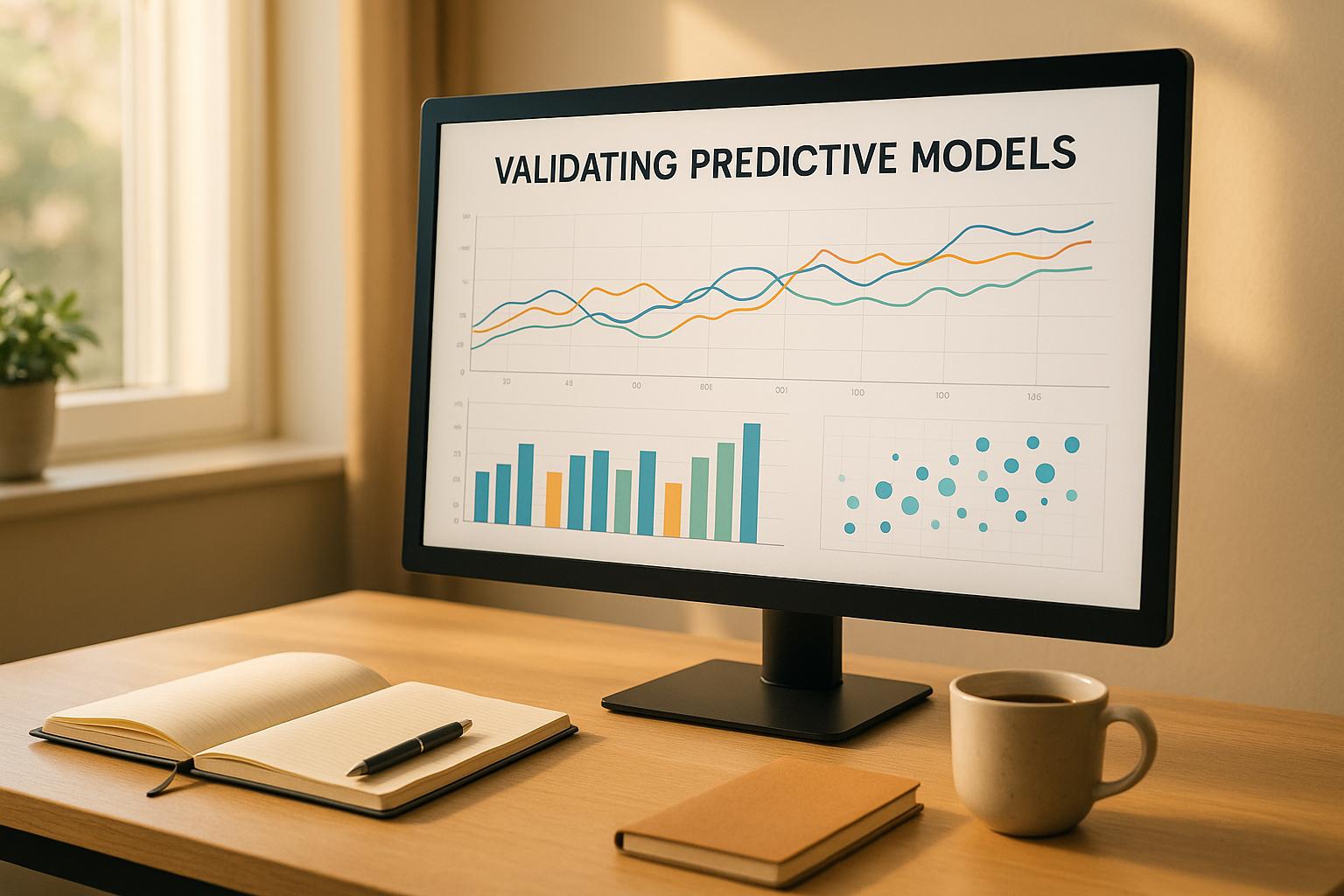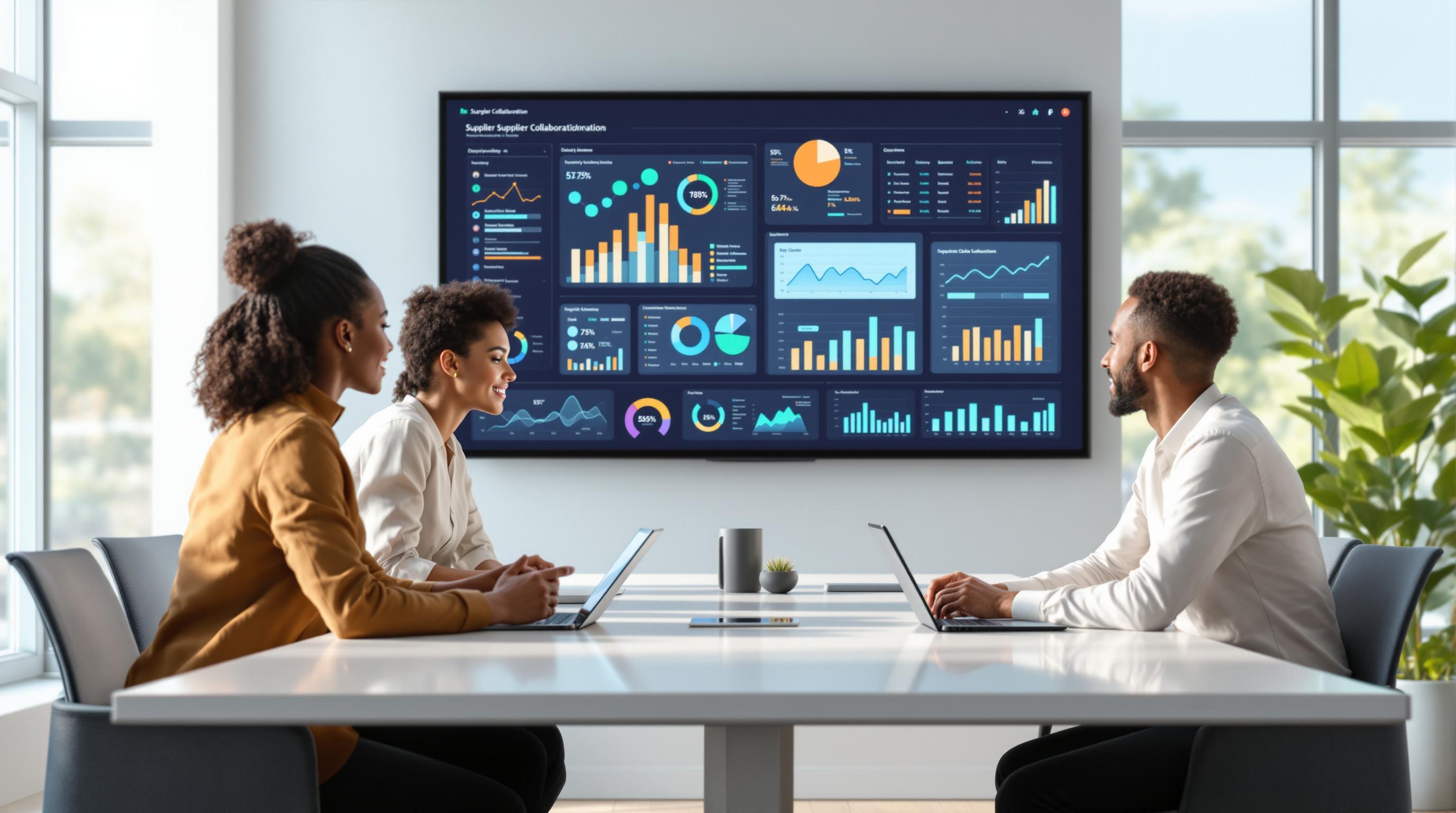Risk prioritization algorithms help businesses identify and rank risks based on their impact, probability, and detectability. They simplify decision-making by assigning numerical scores to risks, allowing teams to focus on the most critical issues. Modern tools, powered by AI and machine learning, improve accuracy by analyzing historical data and predicting risks more effectively.
Key Takeaways:
- Risk Priority Number (RPN): Calculated as
Impact × Probability × Detectability. Higher RPNs indicate more urgent risks. - Risk Matrices: Visual charts categorize risks into levels (Critical, High, Medium, Low) for easier prioritization.
- AI in Risk Management: Automates analysis, enhances accuracy, and detects risks early.
These algorithms combine structured analysis with tools like RPN scoring, risk matrices, and AI platforms to allocate resources efficiently and address risks proactively.
What is Risk Prioritization
How Risk Prioritization Algorithms Work
Risk prioritization algorithms follow a structured approach that mixes numerical analysis with visual tools to assess and rank risks effectively.
Key Components: Impact, Probability, and Detectability
Three main elements drive risk prioritization:
- Impact: The severity of the potential consequences
- Probability: The chance of the risk occurring
- Detectability: How easily the risk can be identified before it causes harm
Each of these factors is assigned a numerical score to standardize the evaluation process.
What Are Risk Priority Numbers (RPN) and How Are They Calculated?
Risk Priority Numbers (RPN) offer a way to measure and compare risks using a consistent scoring system. The formula is straightforward:
RPN = Impact × Probability × Detectability
Here’s an example:
- Impact score: 8
- Probability score: 6
- Detectability score: 4
The RPN would be calculated as: 8 × 6 × 4 = 192.
The higher the RPN, the more urgent the need to address that risk.
Risk Matrices: A Visual Tool for Ranking Risks
Risk matrices are charts that help organize risks based on their likelihood and impact. They turn complex numbers into a clear, visual format, making it easier to prioritize actions. After calculating RPN scores, these matrices are used to categorize risks into actionable levels.
| Impact/Probability | Low (1-3) | Medium (4-7) | High (8-10) |
|---|---|---|---|
| High (8-10) | Medium | High | Critical |
| Medium (4-7) | Low | Medium | High |
| Low (1-3) | Minimal | Low | Medium |
This table helps teams quickly identify which risks need immediate attention (Critical or High) and which ones can be monitored with less urgency (Medium, Low, or Minimal). It’s a practical way to focus on what matters most.
Steps to Implement Risk Prioritization Algorithms
How to Identify and Evaluate Risks
To implement risk prioritization algorithms effectively, start by identifying risks in a structured way. Bring together a team of stakeholders, such as project managers, subject matter experts, and team members, to ensure input from various angles.
The process involves three main steps:
- Risk Discovery Sessions: Host workshops to uncover potential risks across all project areas. Encourage open discussions and document findings thoroughly.
- Use Historical Data: Analyze past data to spot recurring risks and patterns, which can improve the accuracy of your evaluations.
- Set Evaluation Criteria: Assign scores to risks based on key factors like impact, probability, and detectability, using a 1-10 scale.
Ranking Risks with Scores and Visual Tools
After scoring, rank the risks to determine which need immediate attention. Risks are typically grouped into High (8-10), Medium (4-7), or Low (1-3) categories based on their scores.
To manage this process effectively:
- Keep your risk assessments current, document everything clearly, and maintain open communication with all stakeholders.
- Use risk management software to simplify tracking and analysis.
For businesses dealing with complex risk scenarios, AI-powered platforms like AI for Businesses can assist in automating data analysis and predicting risks. These tools are especially useful for organizations aiming to refine their risk assessment processes.
sbb-itb-bec6a7e
Using AI to Improve Risk Prioritization
AI Tools for Risk Management
AI has reshaped how organizations prioritize risks by automating the analysis of large datasets. These tools process information faster and more precisely than manual methods. They also improve traditional approaches like RPN scoring and risk matrices by revealing hidden patterns, making the entire process more efficient.
For example, platforms like PPM Express use machine learning to analyze historical project data, identifying recurring risk trends. Similarly, AI for Businesses offers tailored tools designed to improve risk analysis specifically for small and medium-sized enterprises.
Advantages of AI in Risk Prioritization
Incorporating AI into risk prioritization comes with several key benefits:
| Advantage | How It Helps |
|---|---|
| Cost Savings | Automates repetitive tasks, reducing overall risk management expenses. |
| Early Detection | Spots risks quickly using real-time data analysis. |
| Improved Accuracy | Provides more reliable assessments based on data-driven insights. |
| Ongoing Learning | Continuously refines predictions through adaptive algorithms. |
A recent Deloitte report revealed that 71% of organizations anticipate AI will transform their risk management strategies within two years [3]. This highlights the increasing role of AI in shaping risk prioritization practices.
When adopting AI tools for risk analysis, organizations should keep a few things in mind:
- Integrate with Current Systems: Ensure the AI tools work seamlessly with existing processes.
- Retain Human Oversight: Use AI to assist decision-making, not to replace human judgment.
- Evaluate Performance Regularly: Continuously assess how well AI-driven risk evaluations are working.
Practical Use Cases and Tips
Examples of Successful Risk Management
IBM has shown how a well-structured risk management framework can make a difference. By using risk prioritization algorithms in combination with automated tools and RPN calculations, they managed to cut down IT project delays and improve global resource allocation.
Microsoft offers another strong example. Their software development division implemented a risk prioritization system that improved early risk detection, minimized project delays, and streamlined resource use across teams.
These examples underline how refining and maintaining risk strategies can yield measurable benefits.
Tips for Maintaining and Improving Risk Strategies
Here are some actionable ways to strengthen your risk prioritization process:
-
Regular Reviews and Data Analysis
Schedule quarterly reviews to update risk scores and identify new threats. Leverage historical data to improve assessments and gauge how well your strategies are working. -
Clear Communication
Use tools like risk matrices to visually present priorities. Ensure all teams are aligned on risk management decisions to avoid confusion or missteps. -
Technology Integration
Choose risk management tools that suit your business size and needs - whether that’s AI platforms for smaller enterprises or more advanced solutions for larger organizations. Combine automation with human expertise for the best outcomes.
"The most successful implementations balance automated risk analysis with experienced human judgment to achieve optimal results" [2].
Conclusion: Why Risk Prioritization Matters
Risk prioritization algorithms help businesses make better decisions by systematically ranking threats. This approach allows companies to allocate resources wisely and address potential issues before they escalate. AI plays a key role by offering precise, data-based insights and predictive models, helping businesses respond to risks quickly and efficiently. When paired with structured frameworks, these tools enable companies to manage risks effectively while keeping operations running smoothly.
Using AI-driven insights, businesses can identify risks early and allocate resources where they’re needed most. This approach offers several advantages:
- Focus resources on the most pressing risks
- Improve project outcomes with early detection and proactive planning
- Support better decisions through data-backed insights
The real strength of risk management comes from combining advanced technology with human expertise. While algorithms provide valuable analysis, skilled professionals are essential for interpreting the data and creating actionable strategies. Regular evaluations and open communication are also critical to staying ahead of threats and maintaining smooth operations.
FAQs
What is the formula for calculating risk score?
The formula for calculating a risk score typically involves combining Impact (I), Probability (P), and Detectability (D) to determine the Risk Priority Number (RPN). While the detailed method was explained earlier in the "Risk Priority Numbers" section, the key idea is to evaluate these three factors consistently for all risks.
Each component is scored systematically, and regular reviews are essential to keep the scores accurate as conditions evolve. To apply this method effectively, organizations should:
- Document the reasoning behind each score
- Update risk assessments as new information emerges
- Factor in both measurable data and qualitative insights
- Use consistent criteria for evaluations
"Risk prioritization is essentially about figuring out which risks could hit your project the hardest and are more likely to happen." - Fibery Blog [1]
For simpler or quicker assessments, some organizations use the Impact x Probability model, which skips detectability. This method works well for initial screenings or when time is limited.
Combining these scoring methods with modern AI tools can make risk assessments more precise and efficient. The real challenge is finding the right balance - rigorous calculations must also be practical, ensuring they support decision-making and resource allocation effectively. This balance helps organizations integrate risk scoring into their project management processes while leveraging advanced tools for greater accuracy.


